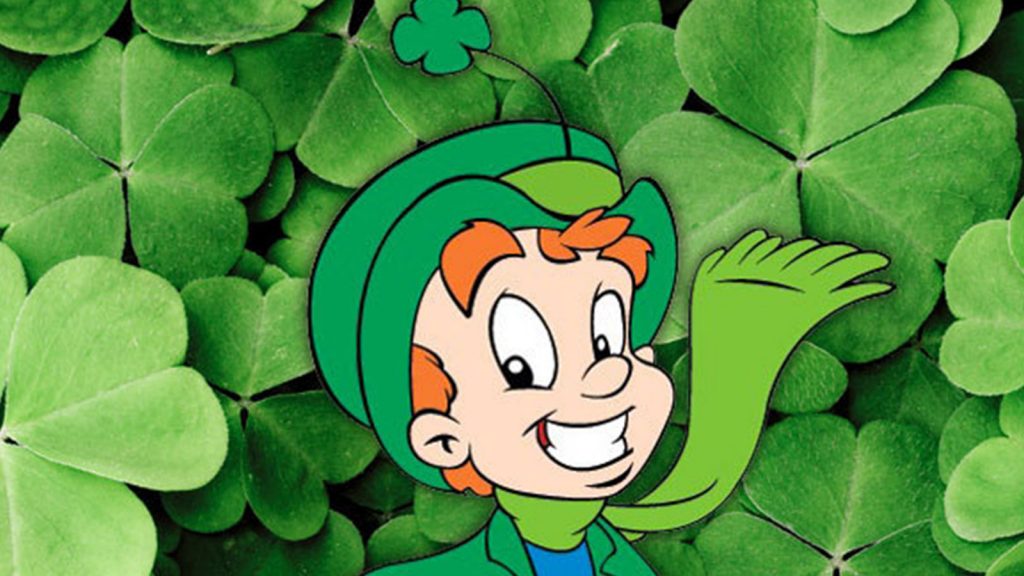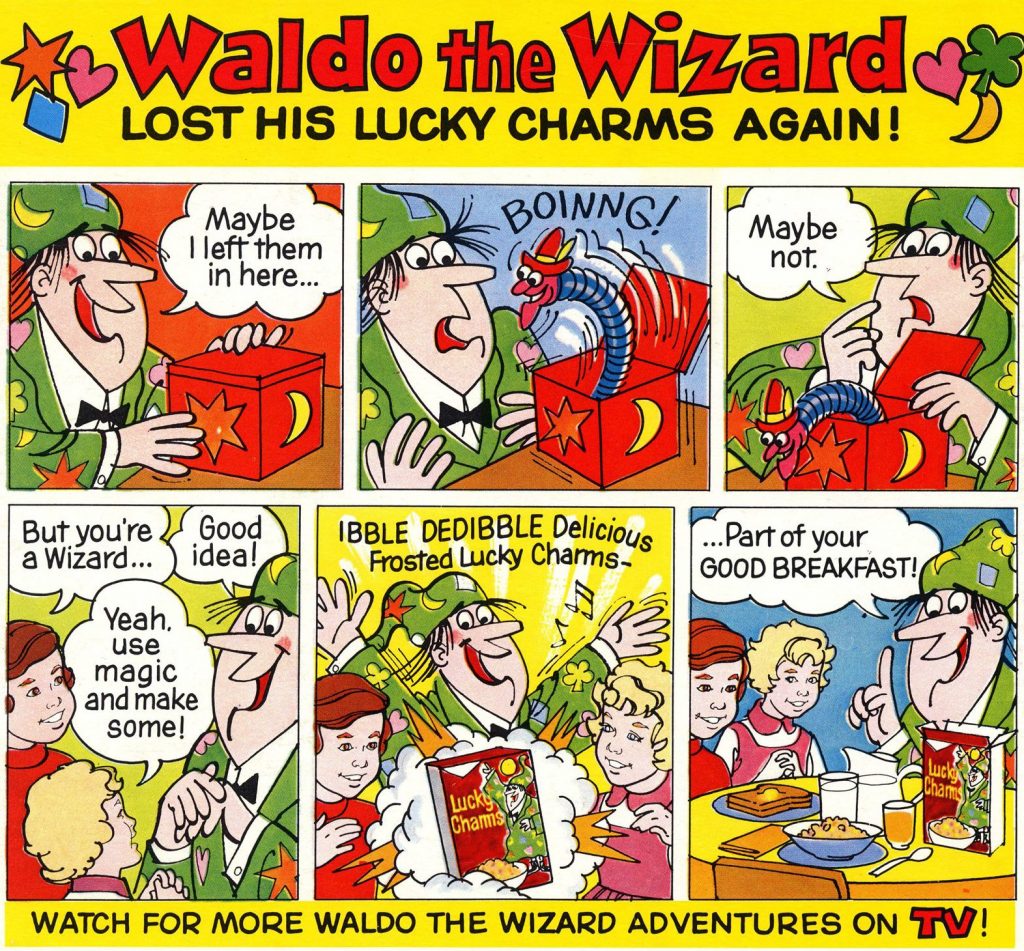The Sugar Cereal Edition of Where’s Waldo

The breakfast cereal aisle in most American grocery stores is littered with sugar cereals. And many of those cereals have recognizable mascots. Frosted Flakes has Tony the Tiger. Trix has the Trix Rabbit. Cap’n Crunch has Cap’n Crunch. (His full name is actually “Captain Horatio Magellan Crunch.”) Froot Loops has Toucan Sam. And Lucky Charms has Lucky the Leprechaun, as seen above.
Lucky, as anyone who follows the lore of sugar cereals (or has seen the TV ads) knows, is magical. He’s often using magic in Lucky Charms ads — here’s a compilation of modern ads featuring Lucky — and his catchphrase is “they’re magically delicious!,” a reference to the cereal. And for a brief moment in the 1970s, Lucky pulled off the ultimate magic trick: he disappeared.
But only from New England. And only for about a year.
Let’s go back to the beginning, though. Lucky Charms has been around since 1964 and, from day one, Lucky the Leprechaun was its mascot (albeit as “L.C. Leprechaun” originally). In the early years, Lucky wasn’t the nicest of characters. Early TV ads for the product showed Lucky holding a box of the cereal and guarding it, much like you’d think of a leprechaun from folklore guarding his pot of gold. A few children come looking for Lucky and his cereal and, instead of sharing it, Lucky uses his magic to flee and, at times, comically injure the kids. In one ad, for example, two kids try to trap Lucky in a cage; he responds by transforming some wood into a horse and gallops away, but the kids trick the horse into giving up its rider. In another, Lucky teleports into a cave to avoid the kids, and while in the cave, uses his magic to knock the kids off a stalagmite and then summons some bats to terrorize them. Lucky just isn’t a very nice leprechaun.
For the marketing folks at General Mills, the maker of the cereal, that opened a door to a question: was a mean leprechaun really the best way to sell cereal? In the early 1970s, marketers at the company’s ad agency had developed a new character, Waldo the Wizard, for a new cereal that never launched. Waldo, like Lucky, was magical, but unlike Lucky, he used his magic for good. He was a forgetful wizard who was always misplacing his cereal, and as seen in the cartoon below (via Atlas Obscura), would use his magic to bring more to the eagerly waiting children.

General Mills now had two options for a Lucky Charms mascot — so they let the data be their guide. First, they did some market testing with focus groups of 12 kids at a time, and a third character — a knight — actually beat out Lucky and Waldo. But per Atlas Obscura, General Mills rejected that option, as “the knight wasn’t magical enough to be the mascot of the long-touted ‘magically delicious’ cereal.” They went with the second-place finisher, Waldo, instead — but only in a small region. For children and shoppers in the New England states — Connecticut, Massachusetts, Rhode Island, Vermont, New Hampshire, and Maine — Lucky vanished without a trace, and Waldo appeared in his place. The rest of the country kept seeing Lucky on their cereal boxes and on their TVs.
And Waldo, by most accounts, sold more cereal than Lucky. It seemed that the little leprechaun was doomed.
So, Lucky got an attitude adjustment. Per General Mills’ official site, “in some of the television spots, [cereal branding creative lead Alan] Snedeker says he made Lucky ‘more friendly,'” which likely increased Lucky’s appeal to kids and their cereal-purchasing parents. Instead of Lucky scheming to keep this cereal, the chases were more of a game — Lucky was no longer trying to rob children of the opportunity to feast on the marshmallows and frosted oats, he was just playing a game with them. While Waldo still proved more popular, this was enough for General Mills to keep Lucky employed; as Snedeker told Yahoo! News, “it wasn’t that the Waldo failed in New England, but General Mills had millions of dollars invested in Lucky… it would be crazy to give that up.”
Waldo vanished in 1975, the same year he made his debut. Lucky? He’s still around today.
Bonus fact: Circus peanuts — you know, these guys — are the worst candy, according to everyone. But they do have one redeeming value: they’re responsible for the creation of Lucky Charms and, really, for every marshmallow cereal. In either the mid-1950s or early 1960s — there’s some debate on the timing, unlike the unanimity around how gross circus peanuts are — General Mills exec John Holahan went grocery shopping when inspiration hit. Per the Associated Press, Holahan was “recalled stumbling upon orange marshmallow peanuts while brainstorming in 1963, cutting them up and then sprinkling them over Cheerios,” and finding that the two worked really well together. He pitched the idea for a new cereal — the first with bits of marshmallows included — and the rest is breakfast history.
From the Archives: Why We Pour Milk on our Cereal: It helps keep the Devil away, apparently.
